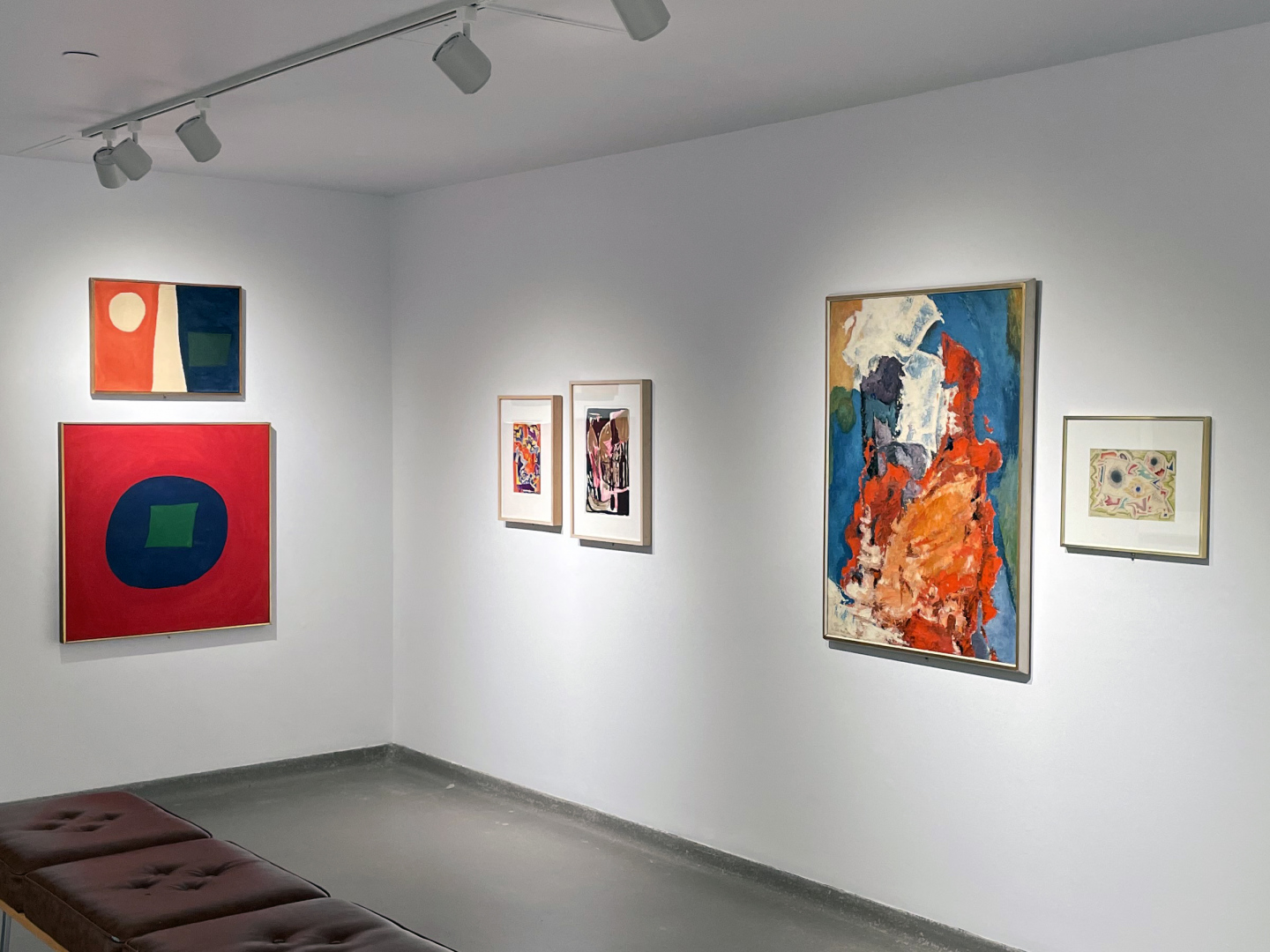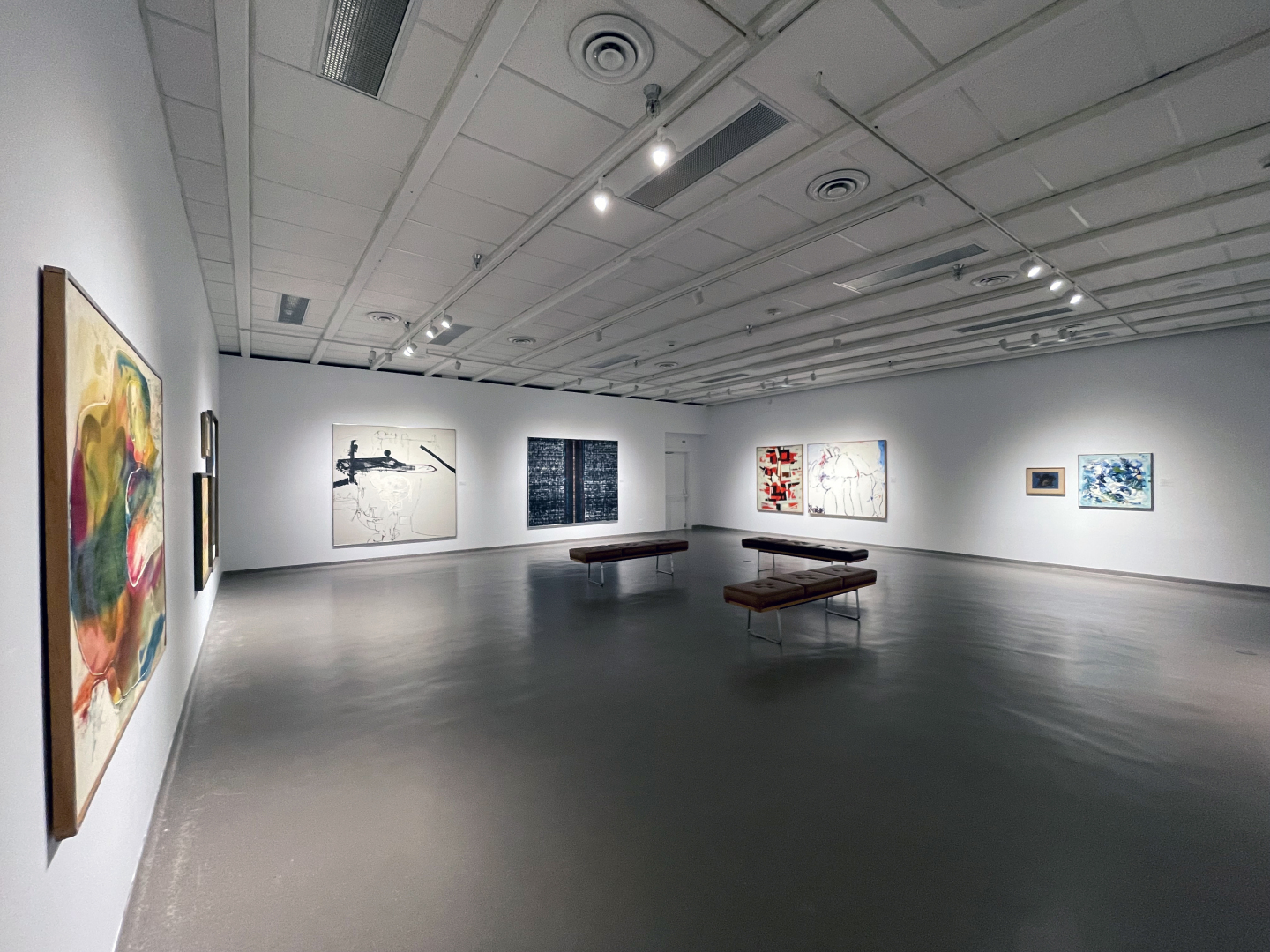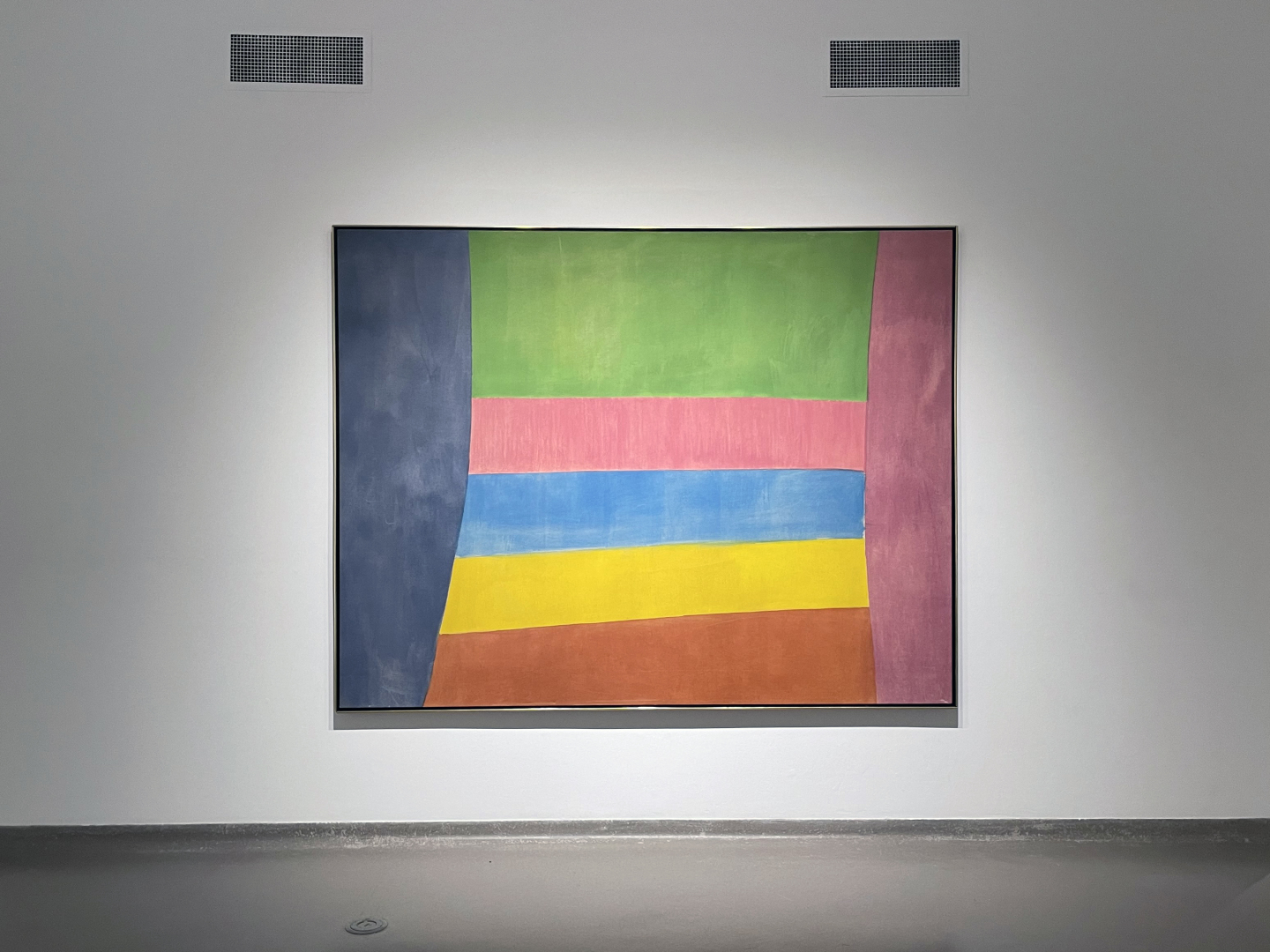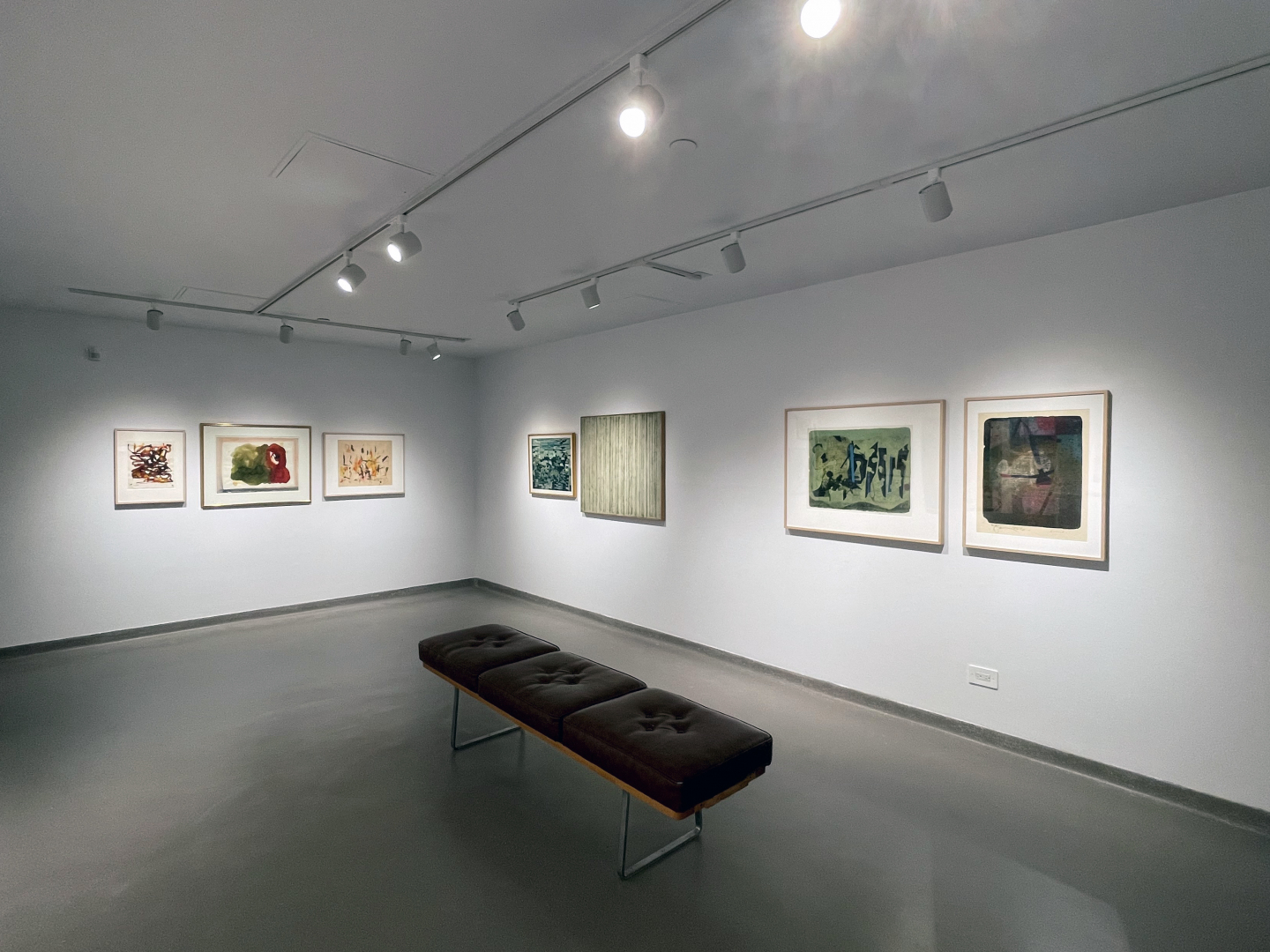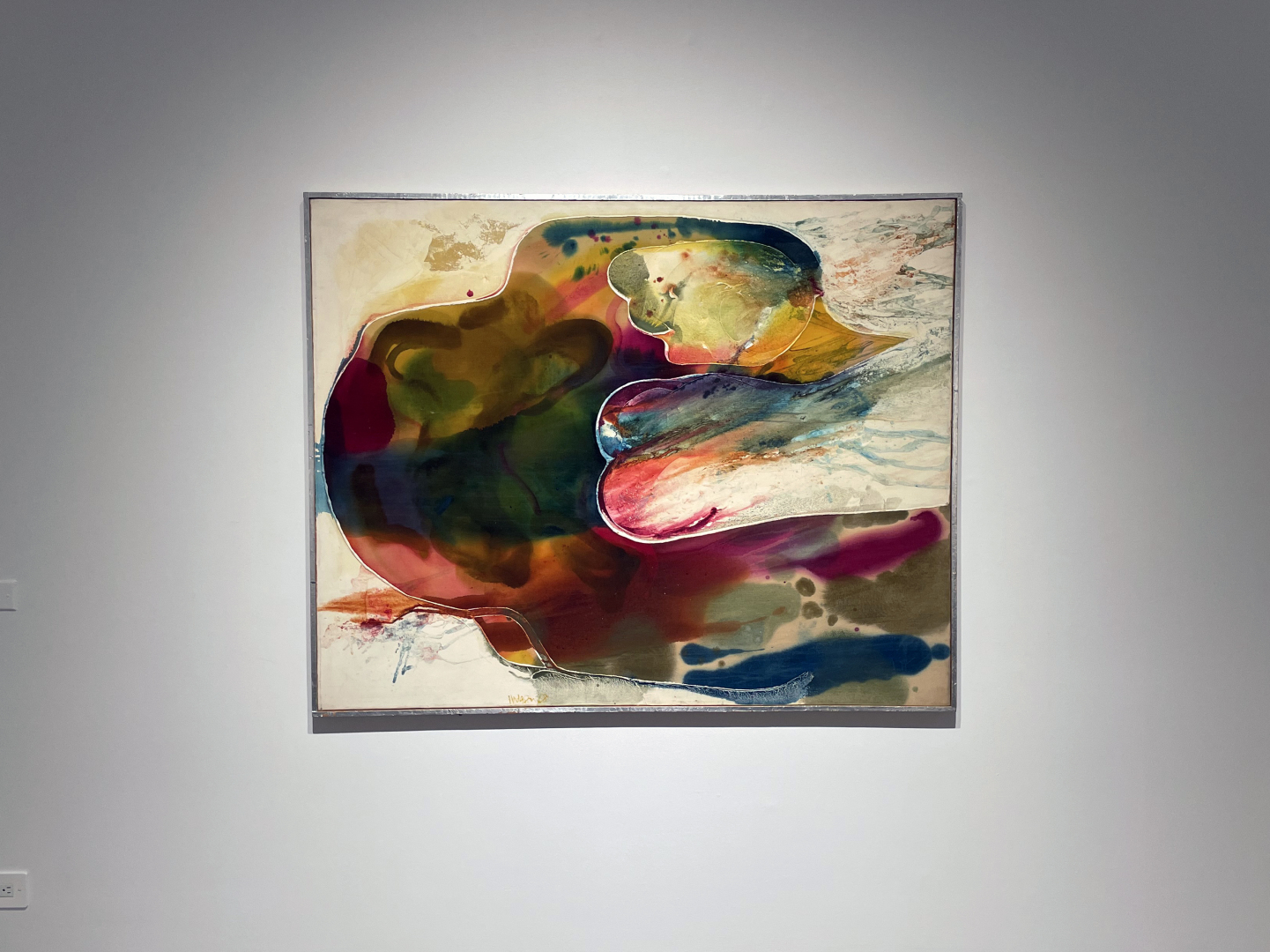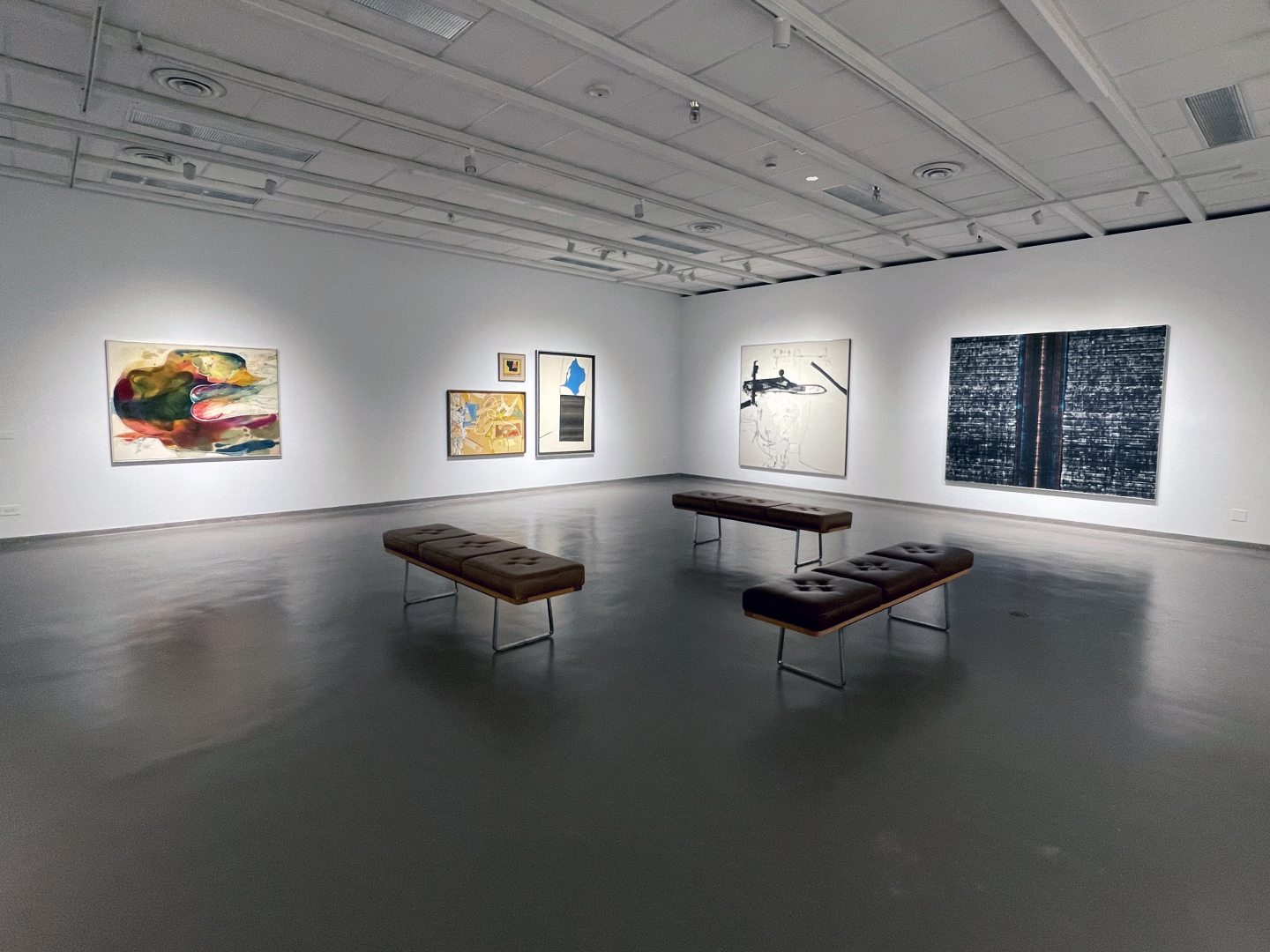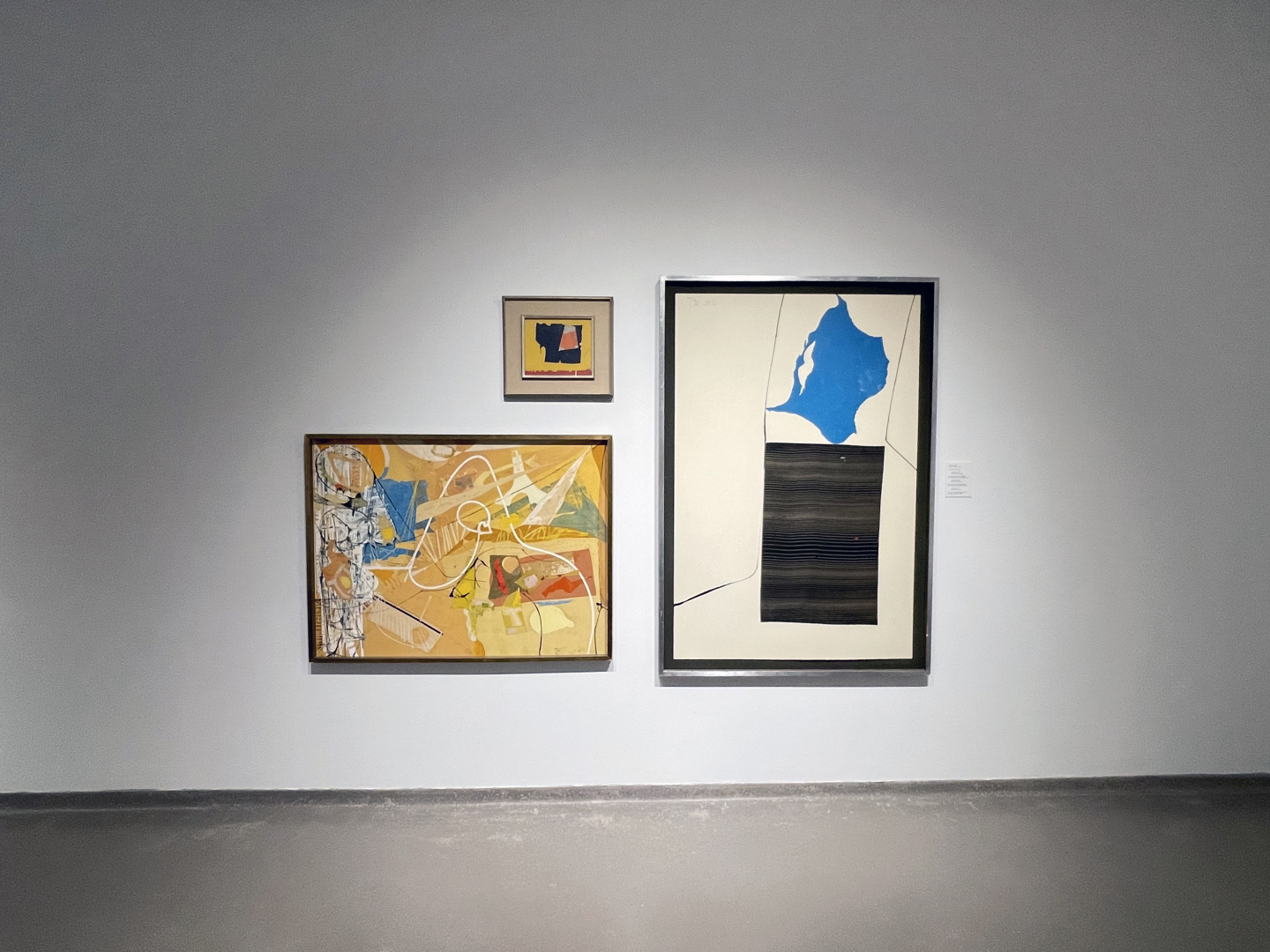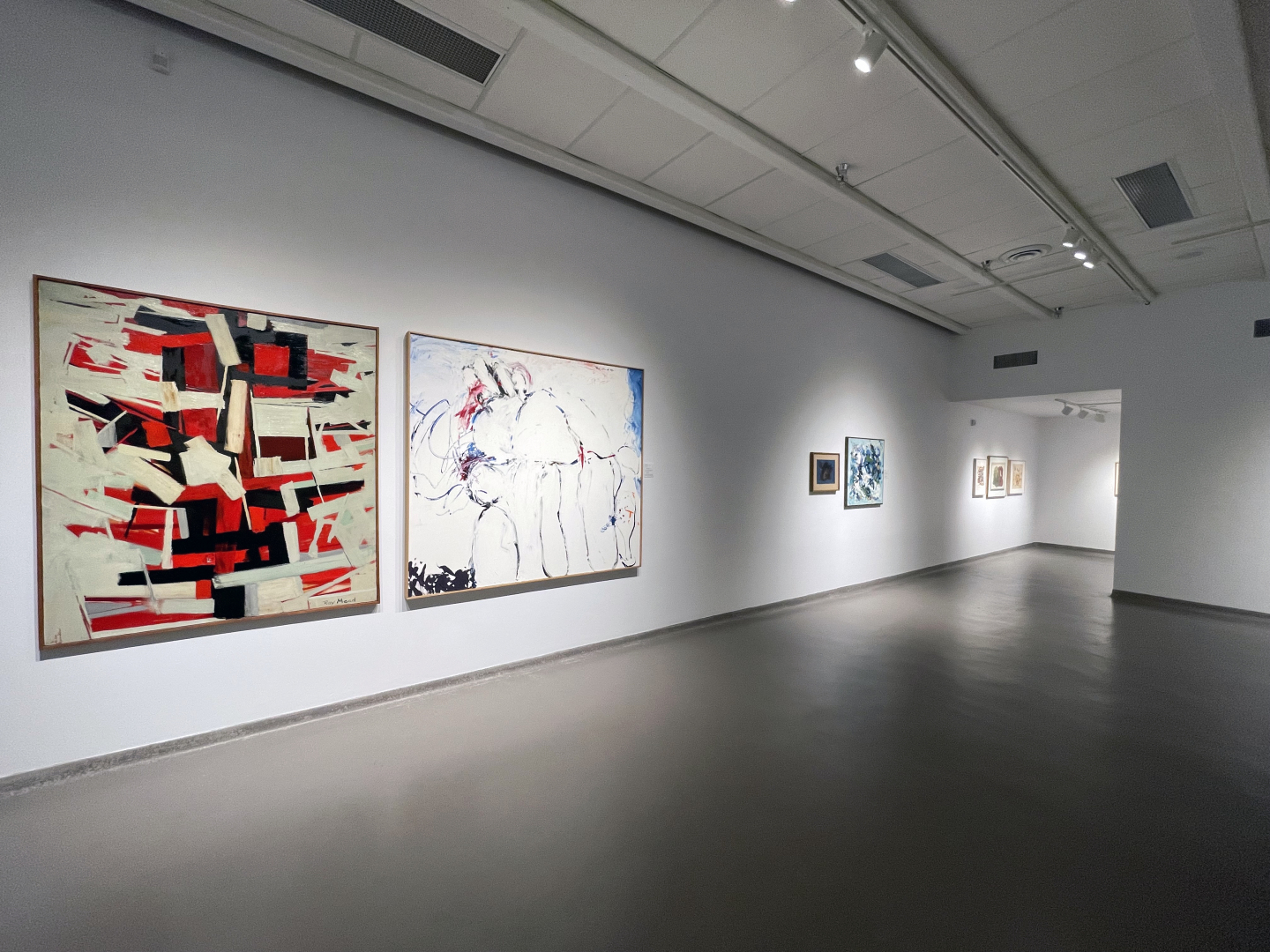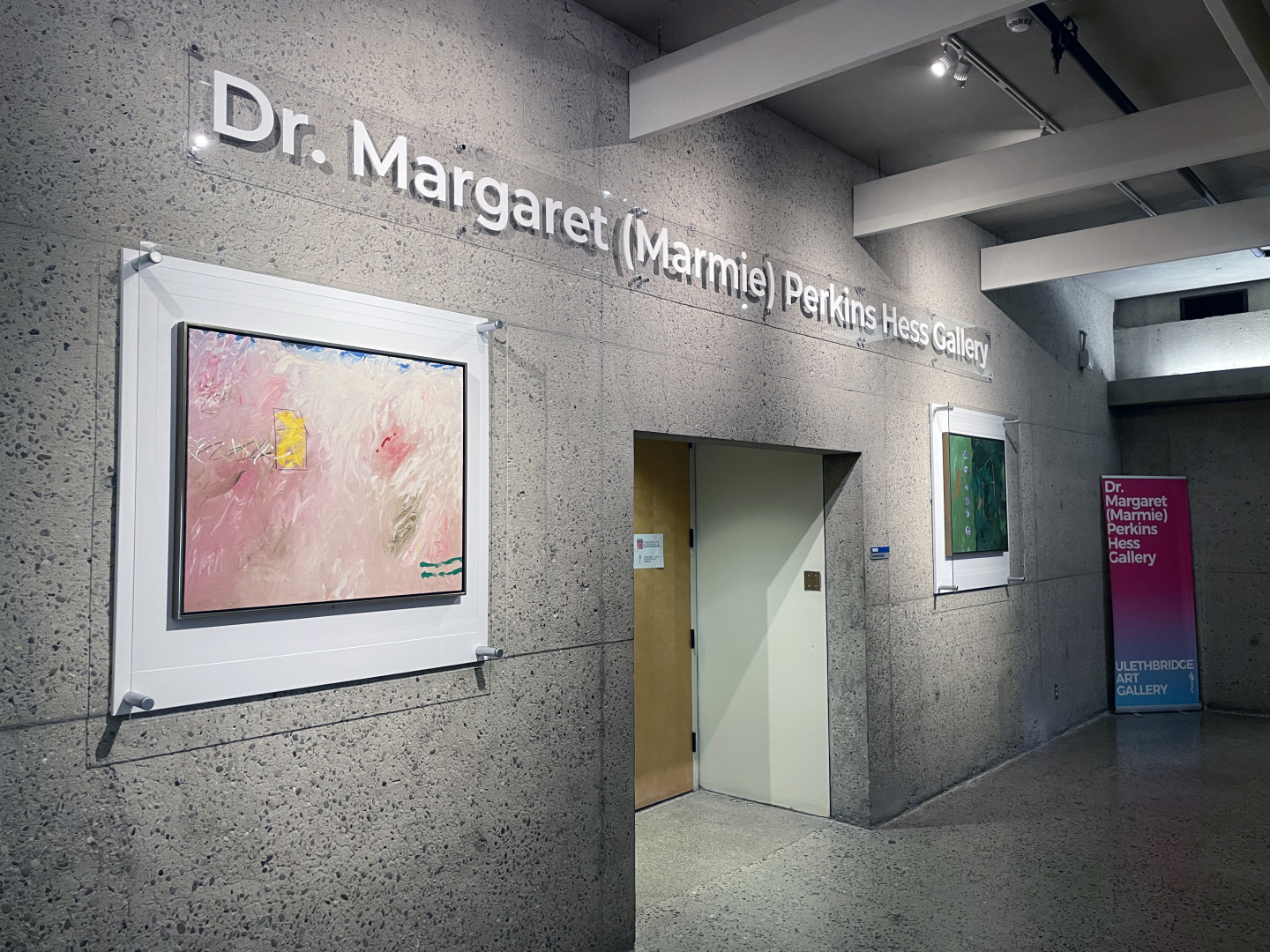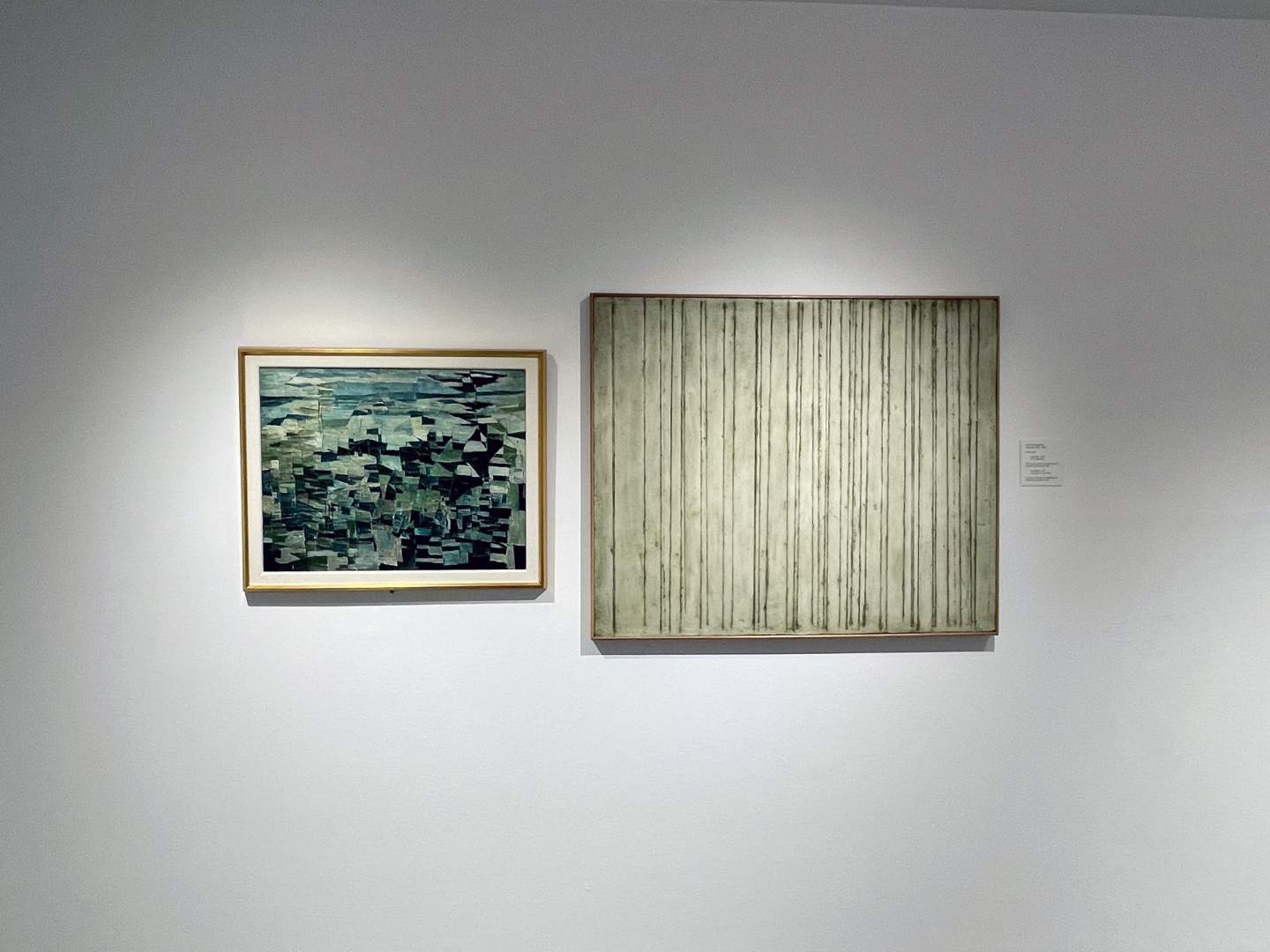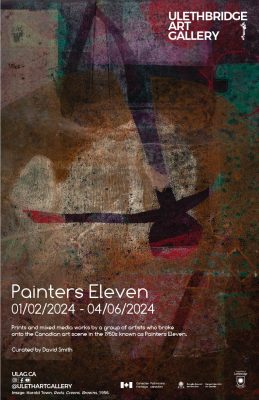Dr. Margaret (Marmie) Perkins Hess Gallery
Painters Eleven
January 2 – April 6, 2024
Works from the ULethbridge Art Collection
Curated by David Smith
This exhibition features paintings, prints and mixed media works by a group of artists known as Painters Eleven, who broke onto the Canadian art scene in the 1950s.
Curatorial Statement:
Painters Eleven was an influential artists’ group from Toronto in the 1950s that helped introduce abstract painting into the mainstream of Canadian art. The artists names were Jack Bush, Oscar Cahén, Hortense Gordon, Thomas Hodgson, Alexandra Luke, J.W.G. (“Jock”) Macdonald, Ray Mead, Kazuo Nakamura, William Ronald, Harold Town and Walter Yarwood. In the 1950s, the city of Toronto experienced significant growth and rapid change. The population of the city doubled as a result of the increased economic prosperity following WWII, an influx in immigration, and a boom in population and industry. Time and Life magazines, which began circulation in Canada in the 40s, brought increased awareness of the current trends in American art and the rise of commercial air travel created greater possibilities for international cross-pollination.
In the early years of the decade, the art scene in Toronto was dominated by the legacy of the Group of Seven and their signature landscape paintings. The annual juried shows by the Ontario Society of Artists, Royal Canadian Academy of Arts and others reflected a very conservative taste for art and tended to ignore the dramatic changes happening outside the province. Non-figurative abstract painting was happening in Montreal where the artists known as “Les Automatistes” were working already for a decade, and in the US, Abstract Expressionists like Jackson Pollock, Mark Rothko and Willem de Kooning had created a new visual language for artistic expression. In an effort to challenge the status quo in Toronto and introduce the public to new ideas that were taking root, a group of artists banded together under the name Painters Eleven.
In 1953 the group met at Alexandra Luke’s studio to discuss the idea of coming together to form a group where they might find strength in numbers and in a spirit of common purpose, create their own opportunities for showing abstract art and foster an appreciation for more challenging contemporary art. At first, Bush was the only artist represented by a dealer and so he approached his gallery with the idea of a group exhibition, which took place at the Roberts Gallery in February of 1954. Many more exhibitions followed in the coming years including an exciting opportunity to show alongside their American contemporaries in an exhibition that took place in 1956 titled American Abstract Artists, at the Riverside Museum, New York. William Ronald’s success in a series of subsequent New York exhibitions drew the attention of influential art critic Clement Greenberg who visited the artists in Toronto in 1957. For many of the artists, this was a turning point. When the group amicably disbanded in the fall of 1960, they agreed that it was because they had achieved their stated intent. Their works were being shown regularly in galleries and they had gained significant reputations as leaders in the local art scene. As a result of their efforts, new galleries had sprung up and the media began to pay more attention to contemporary art. Ground had been broken for the next generation of artists working in Toronto such as Dennis Burton and Gordon Rayner who converted to abstraction after seeing the work of Painters Eleven and later artists like Joyce Wieland, Michael Snow, Tony Urquhart and others built on their foundations of abstract expressionism.
For this exhibition I have included works by nine of the eleven artists who are represented in the UofL art collection with paintings and works on paper. Where possible I have chosen works created during the years the group was active (1953 – 1960). Some of the artists in the group had very long careers (Town, Ronald, Mead and Hodgson) and the inclusion of later works by these artists shows a sustained commitment to non-figurative abstraction. Though each of these artists have very different styles, and also show significant changes in their individual techniques as the decades passed, what they share is a passion for abstract painting. In so many of the works a pure joy of painting shines through.
David Smith
Assistant Curator / Preparator
